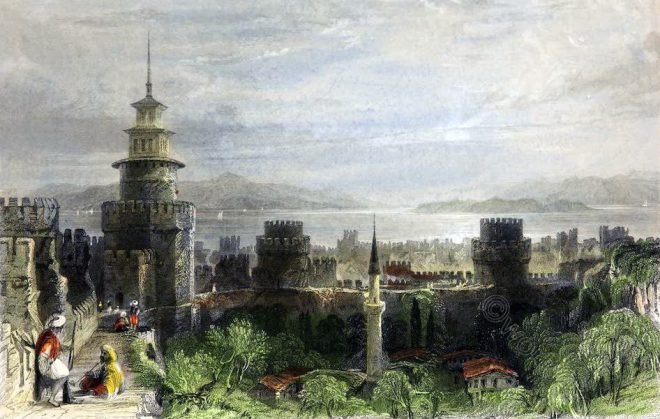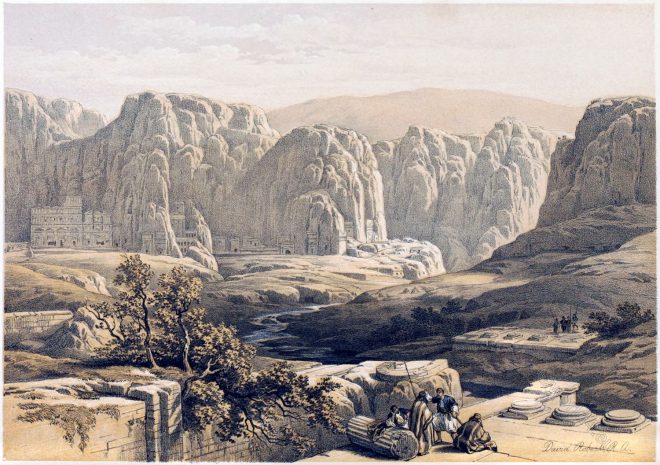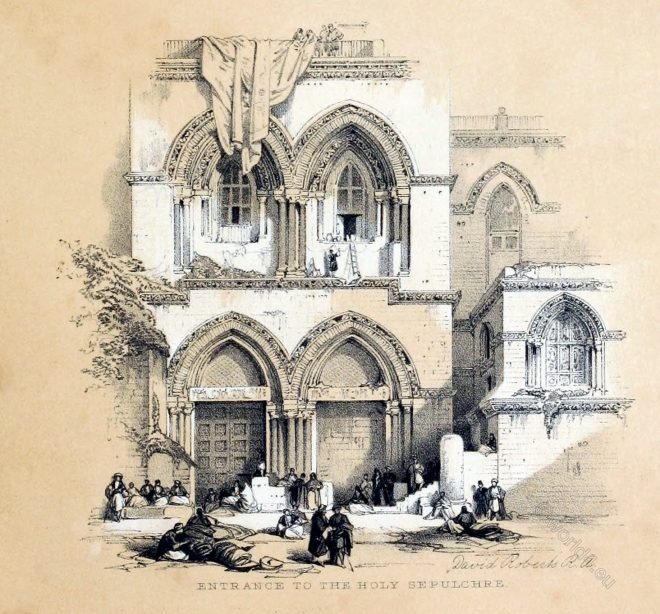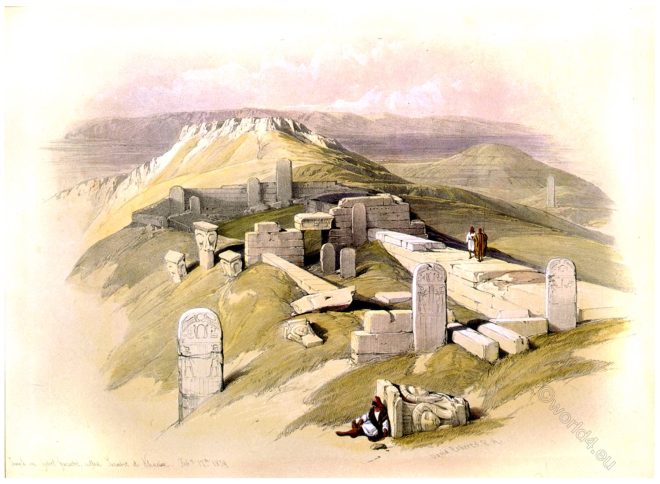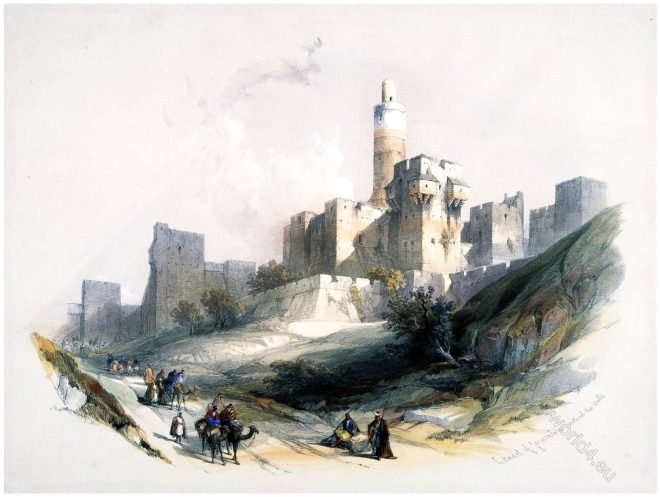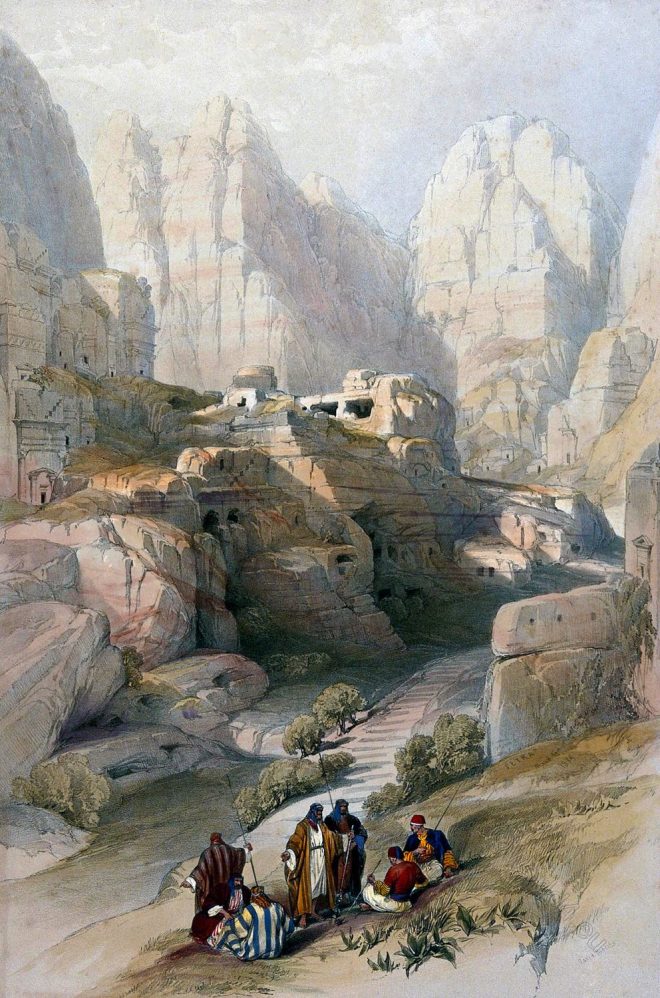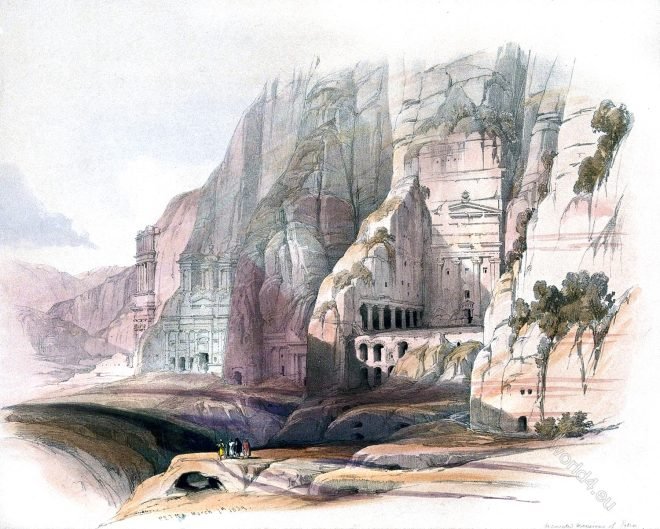The Prison of the Seven Towers. Yedikule Fortress or Dungeons of the Seven Towers in Istanbul, former Constantinople.
Category: 1839
The Gonfanon, or Amorial Ensigns of Jerusalem.
Exhibited in the vignette, were appointed by the chiefs of the first Crusade, after the capture of the city on July 15th, 1099, to be borne by the Christian king then elected.
General representation of the Site of Petra, Jordan.
This Engraving gives a general representation of the area which opens to the spectator on emerging from the “Chasm” by which he enters on the East.
The Entrance to the Church of the Holy Sepulchre at Jerusalem.
This Vignette represents the facade of the Church of the Holy Sepulchre, which is built over the spot where our Lord was presumed to have been buried.
An Ancient Egyptian Temple, on Gebel Garabe. Sinai, Egypt.
A view of the ancient Egyptian Temple of Hathor at Gebel Garabe, usually known as Serabit el-Khadim, in the Sinai, Egypt.
Mount Hor, from the cliffs encircling the ancient city of Petra.
The view was magnificent, commanding El Ghor and the Wady Arabah, while above him towered the naked majesty of Mount Hor.
The Citadel of Jerusalem and the Tower of David.
The citadel of Jerusalem, with the Tower of David, lies on the north-western part of Sion, to the south of the Jaffa Gate.
The Necropolis of Petra. The tombs of the chief Cemetery.
In the valley which conducts to Petra, and which lies outside the “Chasm,” is the chief Cemetery.
Men sitting to smoke by a ravine at Petra, Jordan.
This view is taken from the Theatre, and represents the Excavations in the opposite cliffs; and the continuation of the chief eastern entrance to the City.
Excavations at the Eastern End of the Valley, Petra.
The architects of Petra had evidently a strong sense of beauty. The City, in its pomp and animation, have formed a combination altogether unrivalled.

